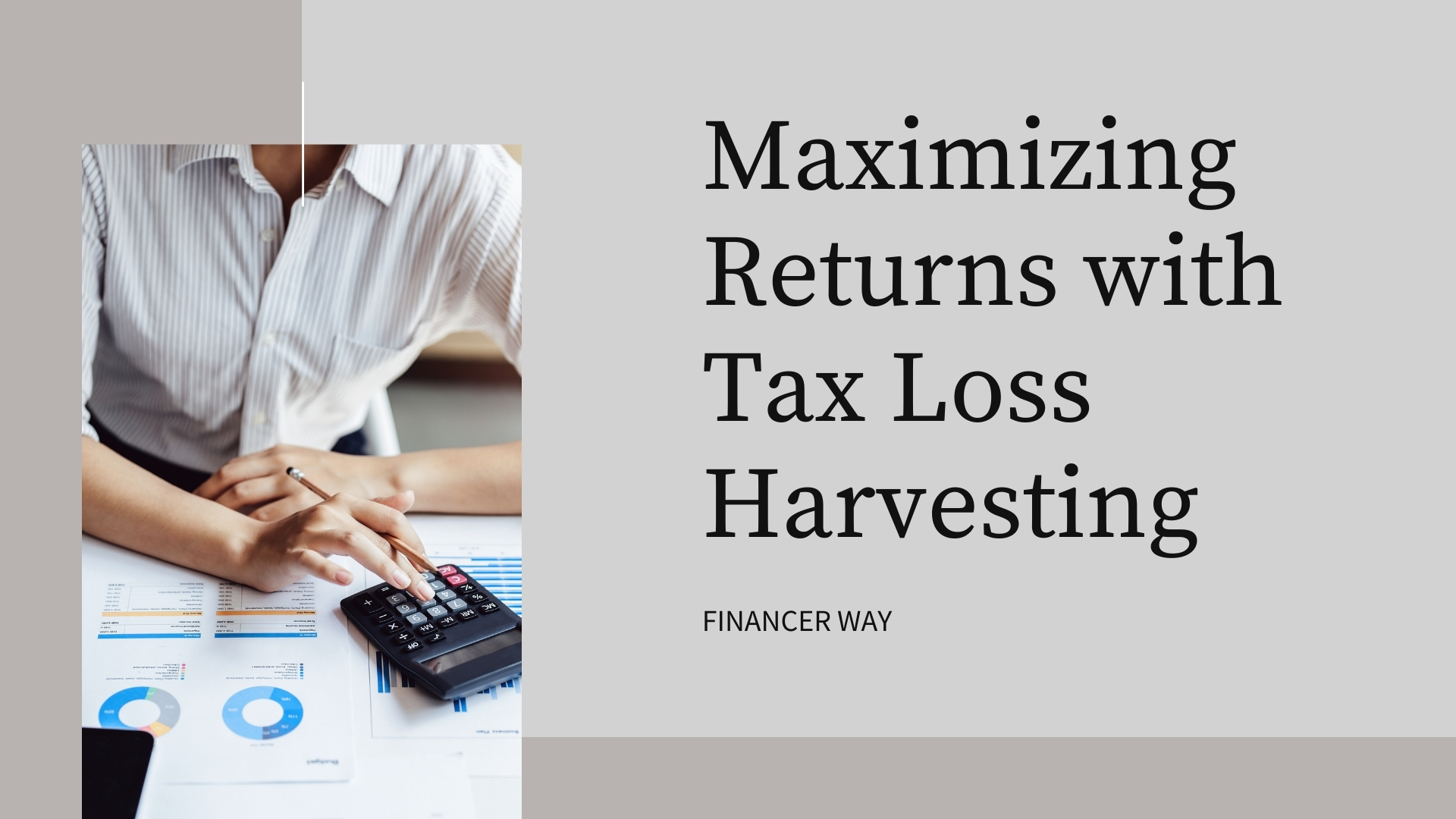Tax loss harvesting is a smart strategy that investors use to minimize taxes and increase returns on their investment portfolio. In short, it involves strategically selling investments that have experienced losses and replacing them with similar assets to maintain portfolio balance. This process allows investors to offset capital gains taxes and even reduce ordinary income taxes, resulting in significant savings over time.
The Mechanism behind Tax Loss Harvesting

Determine the Deficit
The first step in tax loss harvesting is to identify investments that have decreased in value since purchase. They could be stocks, bonds or mutual funds that are currently trading below their purchase price. By identifying these assets, investors can leverage their losses to reduce their tax liabilities.
Sell and Reinvest
Once poorly performing investments are identified, investors strategically sell them to recoup losses. However, it is important to comply with the IRS wash sale rule, which prohibits the repurchase of identical or substantially similar securities within 30 days before or after the sale. To maintain portfolio diversification, investors often reinvest profits in similar but not identical assets.
Use losses to offset profits
The primary benefit of tax loss harvesting is the ability to use realized losses to offset capital gains taxes. When investors sell profitable investments, they typically incur capital gains taxes on the profits. By strategically capitalizing on losses, investors can offset these gains, effectively reducing their overall tax burden.
Benefit from Tax Efficiency
Additionally, tax loss harvesting can also be used to offset ordinary income taxes. Investors can deduct up to $3,000 of capital losses each year from their ordinary income, which can lower their tax bill. Any remaining losses can be carried forward to future years, providing current tax benefits.
Implement tax loss harvesting strategies
| Scenario | Description | Tax Implication |
| Realizing Capital Losses | Selling investments at a loss to offset capital gains taxes | Reduction in taxable capital gains |
| Offset Capital Gains | Using realized losses to offset gains from the sale of profitable investments | Lowering overall tax liability |
| Deducting Against Ordinary Income | Deducting up to $3,000 in capital losses against ordinary income each year | Potential reduction in income tax liability |
| Carrying Forward Losses | Carrying forward unused losses to future years | Continued tax benefits and potential future deductions |
Periodic monitoring of portfolio
Successful tax loss harvesting requires diligent portfolio monitoring. Investors should evaluate their investments from time to time to identify opportunities to incur losses. This proactive approach ensures that investors can take advantage of market volatility and maximize tax savings. ( video by Jerry Romine Stocks)
Maintain Diversification
Although tax considerations are important, investors should not compromise on diversifying their portfolio just for the sake of tax benefits. It is essential to maintain a balanced portfolio that matches your investment objectives and risk tolerance. By diversifying across different asset classes and industries, investors can reduce risk while improving tax efficiency.
Take advantage of technology and automation
With advancements in financial technology, investors can now take advantage of automated investing platforms and tax loss harvesting software to simplify the process. These tools can help identify tax loss harvesting opportunities, execute transactions, and ensure compliance with IRS regulations. By leveraging technology, investors can effectively implement tax loss harvesting strategies with minimal effort.
Benefits of Tax Loss Harvesting for Common Investors

Maximize Returns
One of the main benefits of tax loss harvesting is its ability to maximize returns for ordinary investors. By reducing tax liabilities, investors are able to retain more of their investment gains, thereby accumulating more wealth over the long term.
Reduce financial resistance
Taxes can significantly reduce investment returns over time. Tax loss harvesting helps reduce this tax burden by strategically offsetting gains against losses, thereby effectively reducing the overall tax burden on the investment portfolio.
Improve after-tax performance
Ultimately, tax-loss harvesting can improve the after-tax performance of an investment portfolio. By improving tax efficiency, investors can achieve higher net returns, allowing their investments to grow more quickly over time.
Conclusion
Tax-loss harvesting is a sound investment strategy that can generate significant tax savings for everyday investors. By strategically realizing losses, offsetting gains, and maintaining portfolio diversification, investors can improve after-tax returns and maximize long-term wealth accumulation. Through careful planning and implementation, tax-loss harvesting provides a valuable tool to improve investment portfolios and achieve financial success.
Questions and Answers (FAQ)
1. What is Tax Loss Harvesting?
Tax loss harvesting is a strategy used by investors to reduce taxes on their investment portfolio by selling assets that experience losses and offsetting those losses with gains.
2. How are tax losses recovered?
When investors sell assets that have declined in value since they were purchased, they realize a capital loss. These losses can then be used to offset capital gains taxes due from the sale of profitable investments, reducing the overall tax burden.
3. Is it legal to take tax losses?
Yes, tax loss harvesting is completely legal and recognized by the Internal Revenue Service (IRS) as a legitimate tax strategy for investors to reduce their tax liabilities.
4. Are there any restrictions on harvesting tax losses?
The main restriction on tax loss harvesting is the IRS wash sale rule, which prevents investors from repurchasing identical or substantially similar securities within 30 days before or after the sale. Violation of this rule may lead to denial of tax benefits of crop loss.
5. Who can benefit from tax loss harvesting?
Tax loss harvesting can benefit a wide range of investors, from those with investment portfolios to retirement account holders. This is especially useful for those who belong to a higher tax bracket or have large capital gains.
Additional Information
Tax loss Harvesting Strategies
Long-term capital gains vs short-term capital gains: Depending on the investment time frame, investors can strategically take losses to offset long-term and short-term capital gains taxes.
Loss harvesting in tax-advantaged accounts: While tax loss harvesting is typically associated with taxable investment accounts, it can also be applied to tax-advantaged accounts such as individual retirement accounts (IRAs) and 401(k)s. .
Rebalancing Opportunities: Tax loss harvesting represents an excellent opportunity for investors to rebalance their portfolio by selling better assets and buying less valued securities.
Potential Risks and Considerations
Market Volatility: Tax loss harvesting depends on market fluctuations to generate losses. Therefore, investors should keep in mind potential market fluctuations and their impact on their investment portfolio.
Transaction Costs: While tax loss harvesting can generate tax savings, investors should consider transaction costs, such as brokerage fees and bid-ask spreads, when executing transactions.
Alternative Tax Strategies: Tax loss harvesting is one of several tax strategies available to investors. Depending on individual circumstances, other strategies
